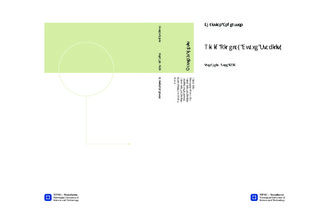| dc.description.abstract | Pipeline installation would generally involve curved sections in the horizontal plane, due to existing subsea infrastructure or natural seabed characteristics. At a small curve radius, the lateral seabed friction could be insufficient providing on-bottom stability of the pipeline. Hence, additional measures like lateral supports, so called turnpoints, may be required. The effect of installing such turnpoints have been studied in this thesis, using a computer software called SIMLA. Both static and dynamic analyses have been performed in order to preserve the curve stability and control the load effect on the pipeline and the turnpoints. In the static analyses, the pipe is being fed out from the Seven Navica lay vessel. In this way, history effects get introduced as the pipe elements experience the operation from being fed out until it rests on the seabed. The dynamic analyses is carried out at the stage in the laying process that results in the highest dynamic response.The pipeline investigated is a 10" ID production pipeline laid between two templates. The route is assumed to have a constant water depth, and consists of two straight distances having a curved section with a curve radius of 400 [m] in between. In the route, originally 10 turnpoints have been installed. In order to investigate whether this is a over-conservative number, the analyses performed in this thesis have been conducted for 3-10 turnpoints along the route.In the static feeding analysis, the axial friction is turned off during laying. This is done since the results obtained with axial friction activated gave less credible results, as the simulations indicated that the static axial force distribution was changed with increased number of turnpoints. Given that the pipe is assumed laid at a constant water depth, deactivating the axial friction can be justified. The reason is that the constant water depth gives rise to a stable departure angle, and thus an approximately constant tension in the pipe during laying.From the static results, it is found that introducing more turnpoints along the route resulted in a flattening of the equivalent moment-curve. This makes sense, since the distance between the turnpoints is reduced. In the same manner, the contact force between the turnpoints and the pipeline gets reduced, as the force is more distributed and shared between additional supports. It is further noted that both the contact force and the moment is symmetrically distributed over the pipeline curvature. Based on this, symmetry of the problem could probably be exploited, reducing the size of the model.Several parameter studies have been carried out in order to obtain the overall worst case results. Based on the parameter study, the dynamic analysis was set up. The following parameters have been applied in the dynamic analyses:- A current direction of 90° pushing the pipe towards the turnpoint- A touchdown position right behind the last turnpoint.\\- A wave heading of 45°from behind on the vessel, introducing both roll and pitch motion. With a significant wave height of HS = 2.5 [m] and a wave period of TP = 7 [s].The dynamic analysis has been carried out during a 3-hour sea state, prescribed by the Jonswap-spectrum. In order to reduce the computational time running the analyses, the worst response during the sea state was found, and then all the analyses was carried out in a short time interval, based on the most critical time.The dynamic tension in the pipeline increases as more turnpoints are installed, i.e. the system gets stiffer. As the system gets stiffer with more turnpoins installed, the contact force between the turnpoints and the pipeline is actually at its lowest when only 3 turnpoints are installed. This can be explained by the increase of tension in the pipeline. A stiffer system gives higher dynamic response. As far as the moment distribution is concerned, the same applies as for the static analyses, i.e. the moment gets reduced when the number of turnpoints is increased.A local buckling check has been performed in order to control the results against DNV's standard for local buckling. It is found that neither 3 nor 4 turnpoints along the route is sufficient to satisfy the local buckling criteria. Hence, 5 or more turnpoints must be installed. In addition to this criteria, the turnpoints used in the case investigated have a geotechnical capacity of 80 [kN]. The contact force between the turnpoint and pipe must therefore be kept below this capacity.As the turnpoints are installed with a certain turnpoint tolerance, an analysis investigating the effect of such tolerance has been performed. As the tolerance was set to 0.5 [m] in the lateral direction, there was an increase in the contact forces, the moment and the tension in the pipeline. The contact force remained within the geotechnical limitations of the turnpoints utilized. However, the results showed that 5 turnpoints along the curvature is not sufficient to fulfil the local buckling criteria. Hence, installation of 6 turnpoints is proposed. This is lower than the originally 10 turnpoints that have been installed for the case investigated. Hence, the method utilized by Subsea 7 is found to be over-conservative.In order to create a picture of how the turnpoint tolerance affects the results, an analysis has been carried out for 1 [m] lateral tolerance as well. This resulted in a significant increase of moments and contact force between the pipe and the turnpoints. Furthermore, the local buckling utilization is considerably increased when the tolerance is as high as 1 [m] in the lateral direction. It is evident that the turnpoint tolerance is of high importance. Keeping the tolerance as low as possible is essential in order to install as few turnpoints as possible. | nb_NO |

